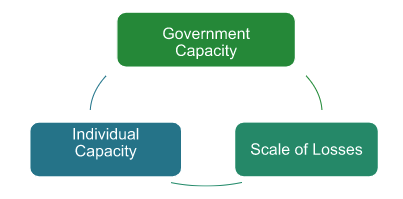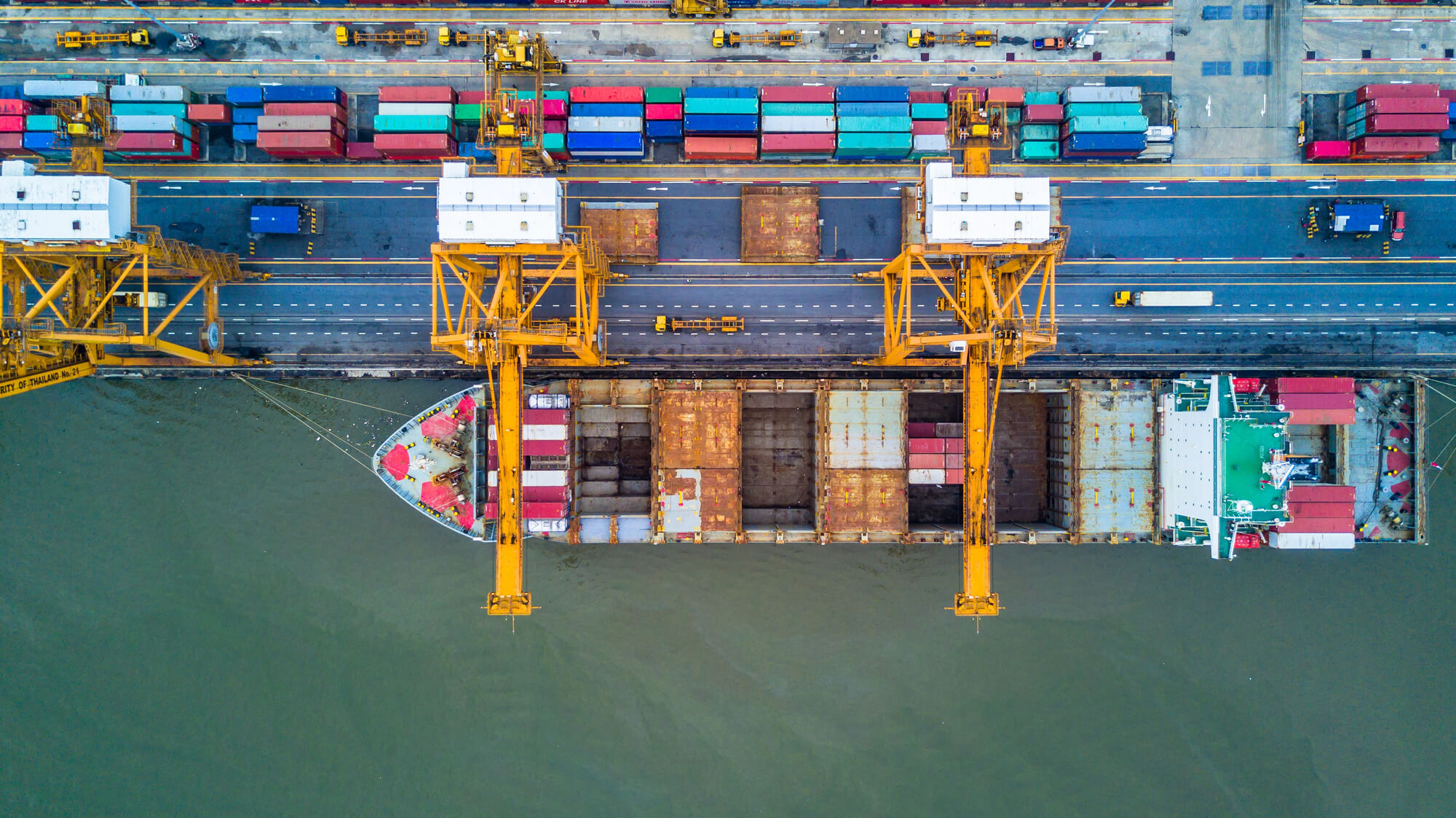Fast, transparent and just compensation of losses and restitution of rights for land and housing property in Ukraine require actions now. Incorporating several critical amendments and adopting the Law on compensation of losses is the first of such steps. Equally important are swift rebuilding of government infrastructure on the de-occupied territories and clarifying the responsibilities for managements of abandoned and destroyed property. The legitimate right holders need to be informed about how to secure their property rights and how to report any losses. These and several other steps discussed below will help to rebuild Ukraine and prevent undue tension in all sectors of Ukrainian society.
The full-scale war by the Russian Federation against Ukraine has already lasted for more than seven months, and its toll is immense. Many thousands of civilians and tens of thousands of combatants have been killed. About 14 million Ukrainians have fled their homes and more than 1.2 million families have their homes damaged or destroyed.
However, as day by day Ukraine comes close to victory, we all start thinking about rebuilding our country. One of the top questions in this regard is how the compensation of losses and damages to the real estate (land, housing, commercial buildings, etc.) will be organized. We all would like to see this process being fast, transparent and just. However, it is difficult to achieve unless we start planning this process and taking actions now.
In July-September, 2022 the Global Land Alliance and the Kyiv School of Economics conducted an assessment of needs for property right restitution and compensation of losses in Ukraine. This study was commissioned by the New America think tank and the World Bank and included review of statistical data and administrative reports, legal and normative acts, and interviews with key Government of Ukraine (GoU) authorities. The results were discussed with a wide range of stakeholders and presented to the Global Donor Working Group on Land on 20 October, and are published by the New America in Ukrainian and English.
Three factors will have the primary effect on the compensation and restitution process: government capacity to manage this process; scale of the Losses, and individual capacity of legitimate right holders to claim their rights for compensation. We consider these factors in turn.
Government Capacity
The process of compensation and restitution of property rights will depend to a large degree on the pre-war conditions of the government infrastructure in this sector. After Ukraine’s independence in 1991, the system of state registration of rights to real estate property was repeatedly reformed. Before 2013, the main confirmation of the rights to land plots were special title documents – state deeds for ownership of land plots, as well as certificates of ownership of real property (for buildings and apartments). Rights to housing units acquired during the Soviet era and the first years of Ukraine’s independence are also confirmed by registration by special communal companies – Bureaus of Technical Inventory (BTIs). After 2013, the official recognition and confirmation by the state regarding the origin, transfer or termination of rights to real property is carried out through entries in the electronic State Registry of Rights for Real Estate (Registry of Rights). However, the registry is only about 40% complete, and majority of property rights acquired before 2013 were not included in the registry. This share is much lower for the territories occupied since 2014.
Pre-2013 land ownership and rental data is stored in the State Land Cadastre. Scanned copies of all state acts on the ownership and rent of land plots registered before 2013 are included in this database. The completeness of the Land Cadastre is 71% (42.7 million hectares).
The capacity of government and private sector infrastructure to maintain the functionality of land and real estate markets and to protect property rights can be represented by the number of market transactions in the pre-war period. Based on 2021 data, there were 200,000 land transactions and 570,000 real estate transactions per year, with 2.1 million successfully processed land transactions at the peak in 2016. Out of these 2.1 million transactions, less than 250,000 were processed in the territories affected by the war*. The total number of court proceedings related to land and real estate was about 170,000 cases in 2020. These estimates of capacity are important in comparison to the number of loss compensation cases that the system will have to handle on the de-occupied territories.
However, processing capacity is currently severely undermined by destruction and looting of local offices of government authorities and private sector actors (notaries, surveyors, etc.) and displacement of staff. As a result, it is reasonable to expect that the government capacity in this sector is reduced by about 20% nationally, including almost complete lack of capacity in the occupied and de-occupied territories. This undermined system will have to handle the additional burden of processing millions of cases for compensation for damage and destruction of immobile property.
The problem of limited capacity will be exaggerated by cases where the owners or users of damaged property have lost documents that prove their property rights, and where no information is recorded in the Registry of Rights or found in the local archives.
Scale of loss
Based on reports by the Local Military Administrations, the estimated number of residential real estate destroyed or damaged as of September 1, 2022 already exceeds 1.2 million housing units, affecting the rights of more than 3.0 million people. Donetsk, Luhansk, Kharkiv and Kyiv oblasts are among the most damaged regions. More than 85% of all known damaged buildings are located in these regions. In these regions alone, more than 800,000 families are affected and will require compensation. In some of the cities and villages (e.g., Mariupol, Lysychansk), the level of damage is above 70% of all buildings.
Damage to farmland caused by mining and unexploded ordnance pollution or damage to topsoil (craters, fortification, tracks by heavy equipment) have been estimated using indirect methods by the KSE Agrocentre together with the Ministry of Agrarian Policy and Food. An alternative approach is remote sensing based on satellite imaging (however, no results are publicly available).
More than 5 million land parcels (13.5 million hectares) are at risk of mining and munition pollution, with estimated 1.3 million parcels that require re-cultivation as well as technical inspection before the land can be used safely.
The losses to property include not only the physical destruction and damage of buildings and productive land plots, but also looting, forced evictions and contamination with explosives, as well as damage of critical infrastructure (water, electricity, heating supplies, roads, social service infrastructure). There are also several other types of property not listed above (e.g. commercial and industrial real estate, irrigation infrastructure) which suffered losses. The security of property rights within the occupied territories and combat zones is also undermined by destruction and looting of government offices and archives, and loss of formal documents confirming the legitimate rights of the property holders. Moreover, a parallel property management system has been created by the occupying forces particularly in areas occupied since 2014.
Unfortunately, these numbers are getting larger by day and it is yet to be seen the full scale of damages on the currently occupied territories.
Individual Capacity
After the start of the full-scale war, a large number of legitimate right holders became detached from their property. Millions of people become internally displaced or moved out of Ukraine. Thousands of people lost their lives and their property rights are in a process of transfer to the legitimate heir. Hundreds of thousands of people are in military forces or helping with logistics. People on the occupied territories may not have access to information about the reporting procedure or may not have means to report the losses. In all these cases people may not be aware of the damages or losses to their property, may not have access to the documents to confirm their rights or may not know how to claim the losses. This implies that the losses presented above are largely underestimated and that in many cases the authorities which will be responsible for administering compensation and managing the reconstruction process will not be able to get in touch with the respective right holders of property which has to be repaired or demolished.
Response to the invasion: land and real estate sector
Since the escalation of the war in 2022, the Government of Ukraine (GoU) has introduced several changes in legislation, procedures and infrastructure to enhance protection of property rights and to increase the resilience of property market infrastructure.
The key component in this response is the Law proposal #7198 (Law on Compensation). It outlines the procedure for compensating residents whose property has been damaged or destroyed as a result of the war. To be accepted into the law, the proposal has to be adopted in the second reading and signed by the Parliament’s Speaker and the President of Ukraine. Currently, proposed amendments are being collected by the authors of the proposal.
The proposed law should clearly recognize the discussed three factors – scale of losses, capacity of the government and individuals. However, it does not. As a result, the proposal has significant limitations in terms of scope and feasibility of the proposed approach. The key concerns include:
- The law leaves it to the Cabinet of Ministers to develop the procedure for issuing compensation. However, the scale of losses is beyond the government’s immediate capacity to respond to, and would require making political choices on the key principles and priorities of the compensation process. This question of prioritization must be discussed openly and guided by law, including establishment of a more specific groups of property right holders, property classes, categorization of affected communities and types of damages and respective approaches for compensation for each of such groups.
- The proposal does not address loss and damage to several large classes of property: e.g. damage to productive land; property that belongs to legal entities (housing and productive assets, including irrigation infrastructure, commercial real estate). It also does not provide an opportunity for long-term renters and users of land, homes or other real estate to apply for compensation.
- There is no procedure for confirming eligibility for compensation for a considerable share of the affected population who lack formal property documents. The electronic Registry of Rights contains, on average, only about 40% of property right records (mostly those which were established after 2013). However, this proportion is much smaller for the occupied territories of Donbas and Crimea, as the registry was functional in these regions only for a few months of 2013 and 2014. Furthermore, paper-based evidence of property rights is likely to be unavailable for those whose houses are damaged or destroyed (sometimes with the documents inside), and property archives in the occupied territories have often been looted. The law must provide guidance about the types of evidence of legitimate property occupancy that can be considered in the absence of original titles, and a procedure for recognizing legitimate rights and awarding compensation based on such evidence. Potential sources of evidence may include, but should not be limited to archived copies of public and private notaries, registration documents of building cooperatives, associations of building co-owners, registration records of the place of residence by territorial authorities, providers of utilities, testimonies of legitimate neighbors. Additional evidence may include composites of digital evidence such as e-commerce and delivery histories, geolocation histories and social media accompanied by the respective safeguarding procedures.
Similarly, the law should also guide in which cases the tenure established on the occupied territories since 2014 can be considered as legitimate.
- The proposed case-by-case procedure for considering applications for compensation is not practical or feasible in areas with large-scale damage or destruction of property. Authorities will have to process a large number of claims (some with significant delays) relying on damaged or destroyed local government infrastructure. The proposed procedure is also vulnerable to corruption, which may trigger frustration and conflicts among the affected population. Instead, a classification of damages and mass processing of compensation can address this problem (e.g. considering all the right holders of a destroyed multi-apartment building as a single case or considering all land parcels cultivated by a single farm). Fortunately, Ukraine has successful experience with mass processing with the registration of privatized land and with the registration of rental rights for agricultural land, which can be useful when establishing a mass compensation processing.
- The court-based system of dispute resolution for cases outside the stipulated procedure will not be able to process a potentially very large number of cases, resulting in the same set of problems as mentioned above. An explicit guidance for treating cases with insufficient formal evidence of rights and the stipulation of an out-of-court dispute resolution system may reduce the load on the court system and speed up the resolution of the majority of disputed cases.
- The law should include procedures for reimbursing property owners or users the cost of repair made out of pocket, or for local businesses, local governments and other actors that subsidized individuals for such repairs. In all cases, the rights for claiming compensation should be transferred to those who cover the cost up to the level when the state demands reparations from the aggressor country.
Successful implementation of the Law on Compensation will depend on the government’s implementation capacity and steps taken in preparation for implementation. Among several actions that need to be taken on the normative and technical levels is establishing the authority of local government over the reconstruction and management of land and housing property in cases when the legitimate right holder cannot be identified and integrating the process of compensation and restitution with a broader reconstruction plan for the war affected areas, including the reconstruction of public infrastructure.
Urgent needs of Ukrainian people and government for housing reconstruction and protection of property rights
Besides planning for future compensation and restitution, there are Urgent needs of the Ukrainian people and government in the area of loss compensation and property right protection that require attention without delay. Such needs include:
- Mobilizing international aid and the supply of critical construction materials (e.g. window glass, roofing material, doors, individual heating units) before the start of the winter season 2022;
- Supporting demining of land and infrastructure;
- Rebuilding and re-equipping local offices of key government services such as centers for administrative services, courts, offices of the State Cadaster and local government authorities. Establishing capacity for providing mobile government services (including registrars and notaries) for citizens living outside rayon and oblast centers;
- Developing a normative base and upgrading Diia service for recording the losses to allow uploading of proofs of legitimate rights to the damaged property as well as for the voluntary recording in the Registry of Rights of property registered before 2013;
- Implementing a public awareness and legal support campaign regarding reporting loss and damage of property and voluntary recording of property rights before 2013, including on the occupied territory. The information campaign should be supplemented with establishment of feedback and support infrastructure for those filing the request for compensation.
The above and several other complementary activities presented in this report will help to rebuild and upgrade Ukrainian real estate and land markets in a reasonable timeframe and prevent undue stress and tension in all sectors of Ukrainian society.
Contributing authors: Denys Nizalov (corresponding author), GLA /De Montfort University; Mariia Bogonos, Kyiv School of Economics Agrocentre (KSEA); Malcolm Childress, Global Land Alliance (GLA); Andrew Martyn, National University of Life and Environmental Sciences of Ukraine; Pavlo Martyshev, KSEA; Roman Neyter, KSEA; Yuliya Panfil, New America; Paul Scott Prettitore, World Bank.
* Occupied territories and those deoccupied since February 2022
Attention
The authors do not work for, consult to, own shares in or receive funding from any company or organization that would benefit from this article, and have no relevant affiliations




